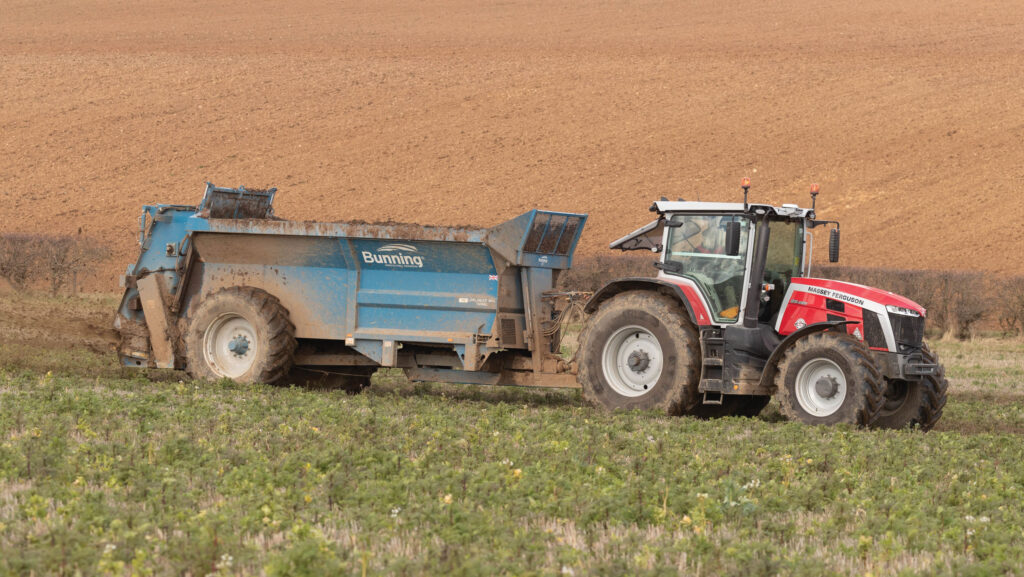How manure can increase soil oxygen and nitrogen use efficiency
 © Tim Scrivener
© Tim Scrivener Increasing soil organic matter levels through applications of farmyard manure can significantly increase soil oxygen levels, which in turn improves nitrogen use efficiency.
The flow of organic carbon through soil is a key driver of soil structure, and therefore oxygen availability, nitrogen use and microbial activity.
How soils are managed links the fates of carbon, nitrogen and oxygen, which in turn influences the production capacity of arable systems.
See also: What is the true value of on-farm soil organic matter?
World’s longest-running experiment
Data from the world’s longest-running experiment – the Rothamsted Broadbalk winter wheat trial, which started in 1843 – is investigating the long-term effects of inorganic and organic fertilisers on soils.
The experiment is revealing an array of benefits of annual applications of farmyard manure including increased soil carbon stocks, more connected pore networks and reduced gaseous nitrogen losses.
- Arable soils amended with farmyard manure reveal more extensive, more connected pore networks than inorganically fertilised arable soils
- In soils receiving farmyard manure, these pore networks are more oxygenated, resulting in reduced gaseous nitrogen losses, increased nitrogen use efficiency and improved farm performance
- Despite disturbance by inversion tillage, annual additions of farmyard manure to arable land resulted in soil organic carbon and nitrogen levels resembling unmanaged woodland and grassland
- Conversely, soils receiving low organic inputs result in a poorly connected pore state, with reduced oxygen levels and higher gaseous losses of nitrogen as nitrous oxide
“The more connected soil pores, the more oxygenated and healthier soils will be due to the development of networks of connected pores. This is the real driver of soil health,” explains Rothamsted soil microbiologist Prof Andrew Neal.
“Our focus is upon soil pores smaller than the diameter of a human hair, because they are responsible for important soil functions such as water holding capacity, delivery of oxygen and nutrients and therefore positive biological activity which builds biomass,” he continues.
Oxygen and nitrogen use efficiency
When thinking about nitrogen applications and improving nitrogen use efficiency, the presence of oxygen is, therefore, essential.
In the absence of oxygen, in poorly structured soils with low organic matter levels, certain populations of soil microbes have evolved alternative methods of respiration.
These methods involve soil micro-organisms using nitrate or sulphate as an alternative respiration pathway (replacing oxygen in respiration), depleting nutrient reserves and contributing to hydrogen sulphide and nitrous oxide emissions from soil.
This brings both a financial and environmental cost to farmers due to the loss of plant available nitrate, but also the release of the potent greenhouse gas nitrous oxide.
Therefore, applying nitrate fertilisers to anoxic soils, depleted of oxygen as a result of poorly structured soils and waterlogging, can reduce nitrogen use efficiency and lead to greater nitrous oxide losses to the environment.
Microbial populations
Soil environments are also influenced by genetic populations of soil micro-organisms.
“We see communities of microbes constantly adapting to the way we manage soils over the long term, especially with increasing organic matter contents,” says Andrew.
In arable land treated with farmyard manure, microbial populations associated with beneficial nitrogen-assimilation pathways increase.
However, in arable soils treated with inorganic fertilisers microbial populations associated with nitrogen losses are greater.
“Managing soils in an appropriate way to encourage plenty of soil oxygen, can select for beneficial microbial populations which respire in a beneficial way for you as farmers and soil itself.”
The more nitrogen in soil, the more carbon to sequester
Carbon sequestration and nitrogen use efficiency work in tandem more closely than many of us realise, explains Rothamsted soil microbiologist Prof Andrew Neal.
“Carbon-to-nitrogen ratios of an individual soil do not change significantly over centuries. The more nitrogen in soil the more carbon you can sequester which is under the influence of microbial activity,” he says.

